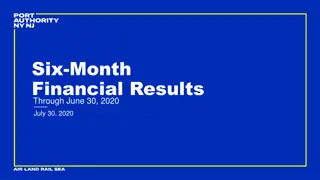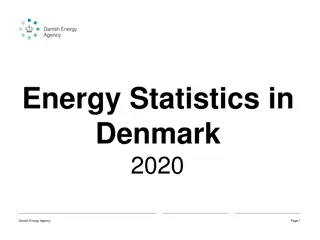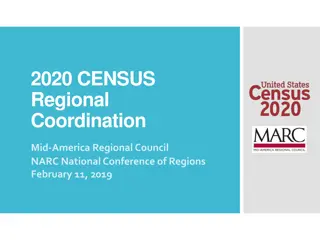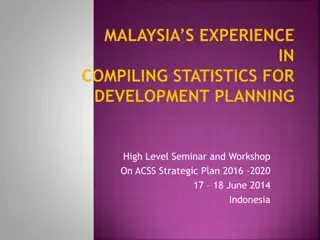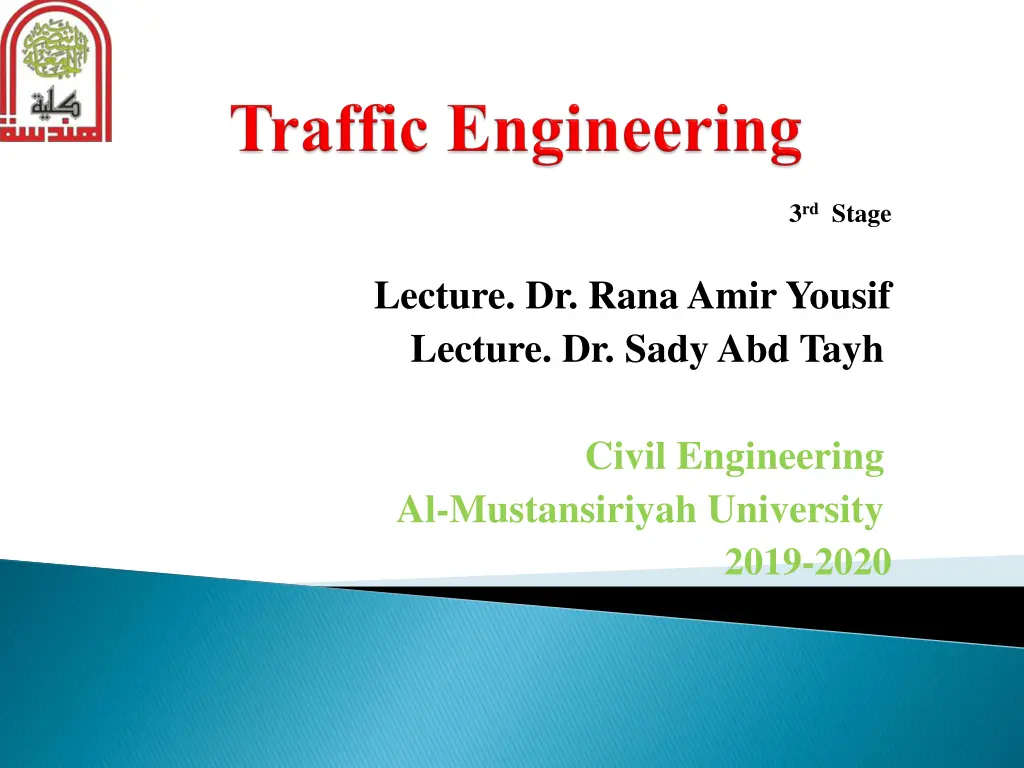
Understanding Time Headway in Traffic Engineering
Explore the concept of time headway in traffic engineering, which is the time interval between the passage of the front bumpers of successive vehicles. Learn about its calculation, variations, and its significance in analyzing traffic flow dynamics on highways.
Download Presentation

Please find below an Image/Link to download the presentation.
The content on the website is provided AS IS for your information and personal use only. It may not be sold, licensed, or shared on other websites without obtaining consent from the author. If you encounter any issues during the download, it is possible that the publisher has removed the file from their server.
You are allowed to download the files provided on this website for personal or commercial use, subject to the condition that they are used lawfully. All files are the property of their respective owners.
The content on the website is provided AS IS for your information and personal use only. It may not be sold, licensed, or shared on other websites without obtaining consent from the author.
E N D
Presentation Transcript
3rdStage Lecture. Dr. RanaAmir Yousif Lecture. Dr. SadyAbd Tayh Civil Engineering Al-Mustansiriyah University 2019-2020
References: Nicholas J. Garber, Lester A. Hoel, (2010) Traffic and Highway Engineering, 4thed. Roger P. Roess, William R. McShane, (2004), update copy (2016) Traffic Engineering (4th Edition). Highway Capacity Manual, (HCM, 2010). Traffic Engineering Handbook: Transportation Engineers, Seventh Editions (2016). Institute of
Headway: time between the passage of the front bumpers of successive vehicles, at some designed highway point. Time headway are related to t, as defined in equation below: Where: t: duration of time interval. hi : time headway of the ith vehicle (time that has transpired between the arrival of vehicle i and i-1). n: number of measured vehicle time headways at some designated roadway point.
Substituting into equation: Where: q: traffic flow in vehicles per unit time. n: number of vehicles passing some designated roadway point during time t. t : duration of time interval. Where: : is the average time headway, vehicle. , in unit time per
If time headway are observed during any period of day, the individual values of time headway vary greatly. This variations depends greatly on: Highway condition. Traffic condition. The time interval between the arrivals of successive vehicle is called the gap distribution. A range of headways between zeros to longer headway can be observed on lightly trafficked rural expressway as drivers can overtake to the widely spaced vehicles. Whereas on more heavily trafficked highways all vehicles are traveling at uniform headway or the vehicles follow each other along the carriageway. 1. 2.
1. Poisson Distribution If traffic flow is assumed to be random then the probability of exactly vehicles arriving at a given point on the highway in any time t, is obtained: Where: x: Number of vehicles. t: time interval. Oven Poisson distribution is referred as counting distribution because it represents no. of vehicles arriving in a given time.
2. Negative Exponential for Arrival Negative exponential can be obtained from Poisson distribution. If there are no arrivals in less than t or there must be headway greater or equal t.
(1) Time Headway >lower limit (2) (3) (4) (5) (6) Obs. No. of headway in class >lower limit Obs. Freq. of headway >lower limit Col. (3) as (%) Obs. (%) of headway >lower limit Theo. Freq. of Headway >lower limit 2.9 37 134 100 100 134 3-5.9 36 97 72.4 65.6 87.9 6-8.9 26 61 45.5 43.8 57.4 9-11.9 11 35 26.1 28.7 38.5 12-14.9 9 24 17.9 18.8 25.2 15-17.9 5 15 11.2 12.5 16.8 18-20.9 5 10 7.5 8.2 11.0 21-23.9 1 5 3.7 5.4 7.2 24-26.9 1 4 3.0 3.6 4.8 27-29.9 1 3 2.2 2.4 3.2 30-32.9 2 2 1.5 1.6 2.1 >33 0 0 0 0.8 1.1
Solution: Solution in table(1) and is explained below: Col. (1) and Col.(2): are given. Col. (3): total frequency >=lower limit of the class. = 134 for t >= 0 = 97 for t >= 3 = 134-37 = 61 fir t >= 6 = 97-36 Col. (4): (134/134)*100 = 100% (97 /134)*100 = 72.4% (61 /134)*100 = 45.5% Col. (5): probability p(h>=t) =
for t = 0 for t = 3 for t = 6 Col. (6): for t = 0 134 t >=3 0.656 * 134 = 87.9 t >=6 0.428 * 134 = 57.4



